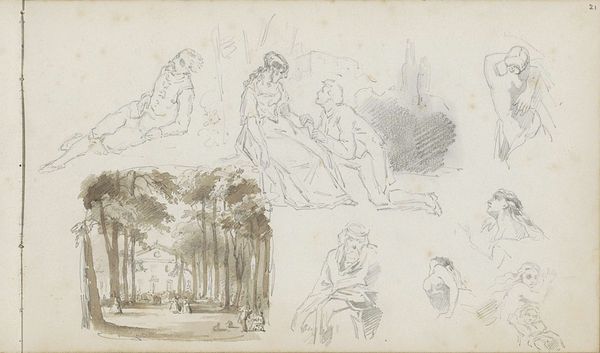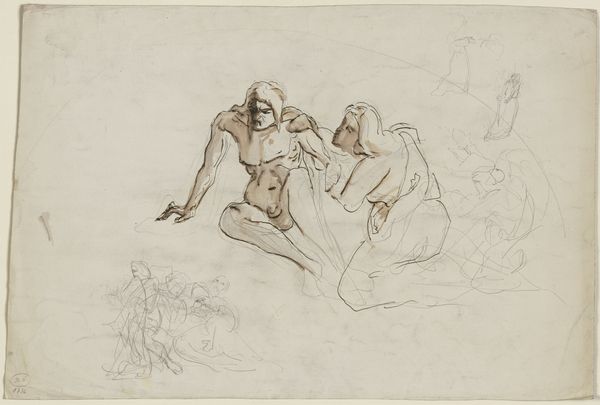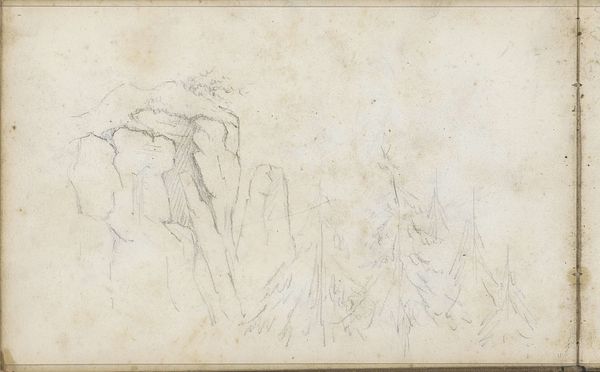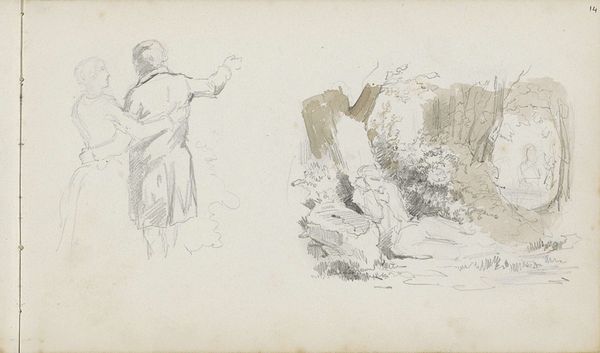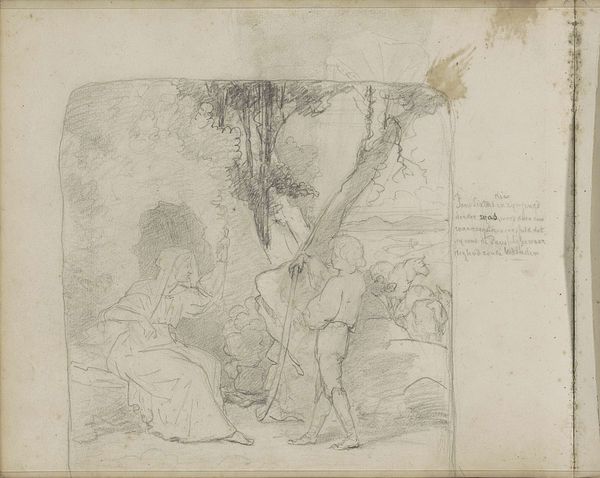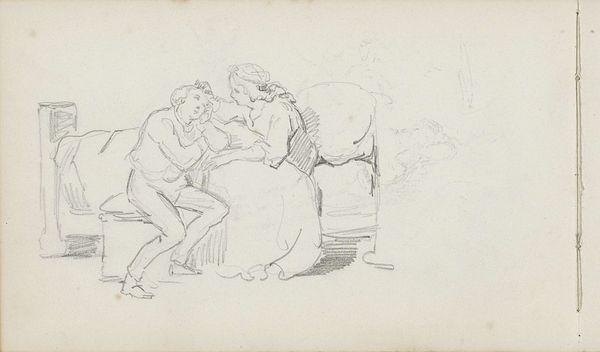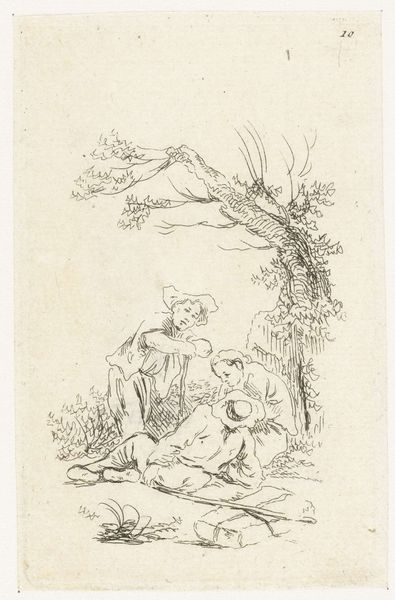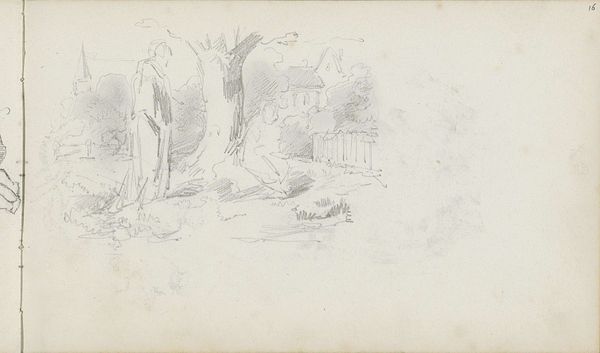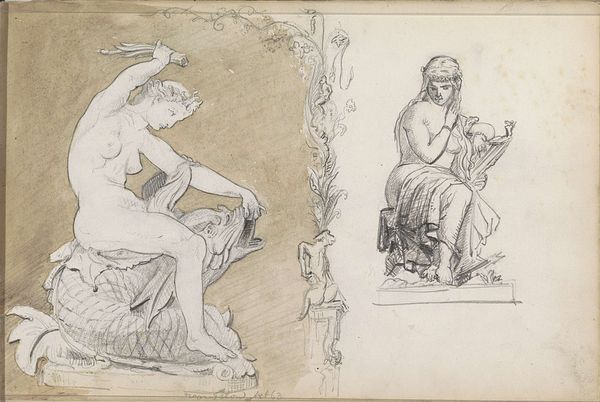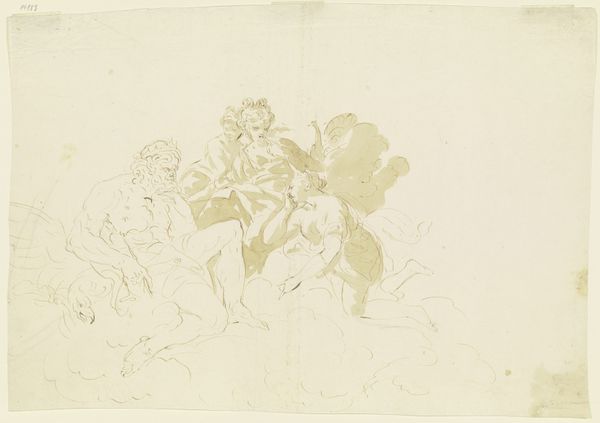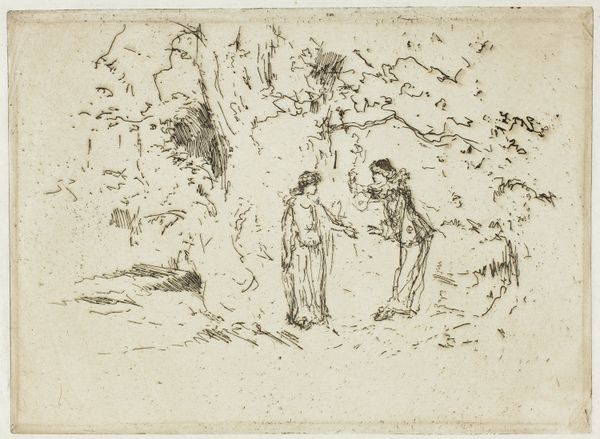
drawing, ink, pencil
#
drawing
#
narrative-art
#
pencil sketch
#
landscape
#
figuration
#
ink
#
romanticism
#
pencil
#
genre-painting
Copyright: Rijks Museum: Open Domain
Curator: Here we have "Liefdespaar en een gezelschap in een landschap" by Charles Rochussen, dating from about 1840 to 1860. It's a drawing done in pencil and ink and currently residing at the Rijksmuseum. Editor: Immediately, I'm struck by the contrast—or lack thereof—between the detailed foreground and the almost ghostly background scene. It feels like two separate worlds, almost like two distinct emotional states laid side-by-side on a single piece of paper. Curator: That contrast is interesting. The clear, precise lines of the couple, their physical interaction so clearly defined by Rochussen's confident strokes, versus the more ephemeral rendering of the landscape with its figures. One is fully realized, tangible, the other fading, suggesting impermanence perhaps. Rochussen might be playing with the very idea of tangible versus intangible. Editor: Yes, and what do the symbols whisper here? A love pairing front and center, suggesting perhaps intimacy, strong human bonds, as juxtaposed with a society, rendered as mere apparitions? Are we considering a world where love supersedes social ties or perhaps how relationships form, live, and sometimes…fade like memories. Curator: Or, considered through a more materialist lens, is Rochussen reflecting on the societal structures that dictated such couplings? Think about the role of courtship, the economics of marriage in that era... these very "apparitions" might signify the broader societal pressures acting on that central, 'solid' relationship. Was the drawing meant as an exercise in capturing the constraints, through labour intensive drawings like this? Editor: Interesting idea. I look at the figures under the trees and there is a sort of quiet serenity. One can interpret these background figures in numerous ways. To me, these individuals serve as a looking glass reflecting love as a moment, contrasted to communal presence as a whole – a shared narrative. Love as a passing emotion, experienced uniquely. And in due course – that sensation then dissipates, becomes one thread amongst the web of memories, culture and social interactions. Curator: So it could be a piece grappling with not just emotion, but its material manifestation through social practice, its impact on communal narratives as expressed with a dog casually laying next to them. All considered together using pencil and ink, mediums accessible yet demanding craft. Perhaps the intent lies within illustrating the complexities, impermanence, yet inherent social structure and roles within Dutch Society? Editor: I hadn't considered it from that angle! It's remarkable how these symbols, simple strokes on paper, continue to resonate and evolve with our own contemporary lens. Curator: Indeed. I see now Rochussen was not only thinking about materials, and labour. In order to grasp such feelings, the medium allows a closer grasp on emotional, fleeting impressions – thus perhaps his intentions reflect a much deeper emotional layer than merely material elements.
Comments
No comments
Be the first to comment and join the conversation on the ultimate creative platform.
